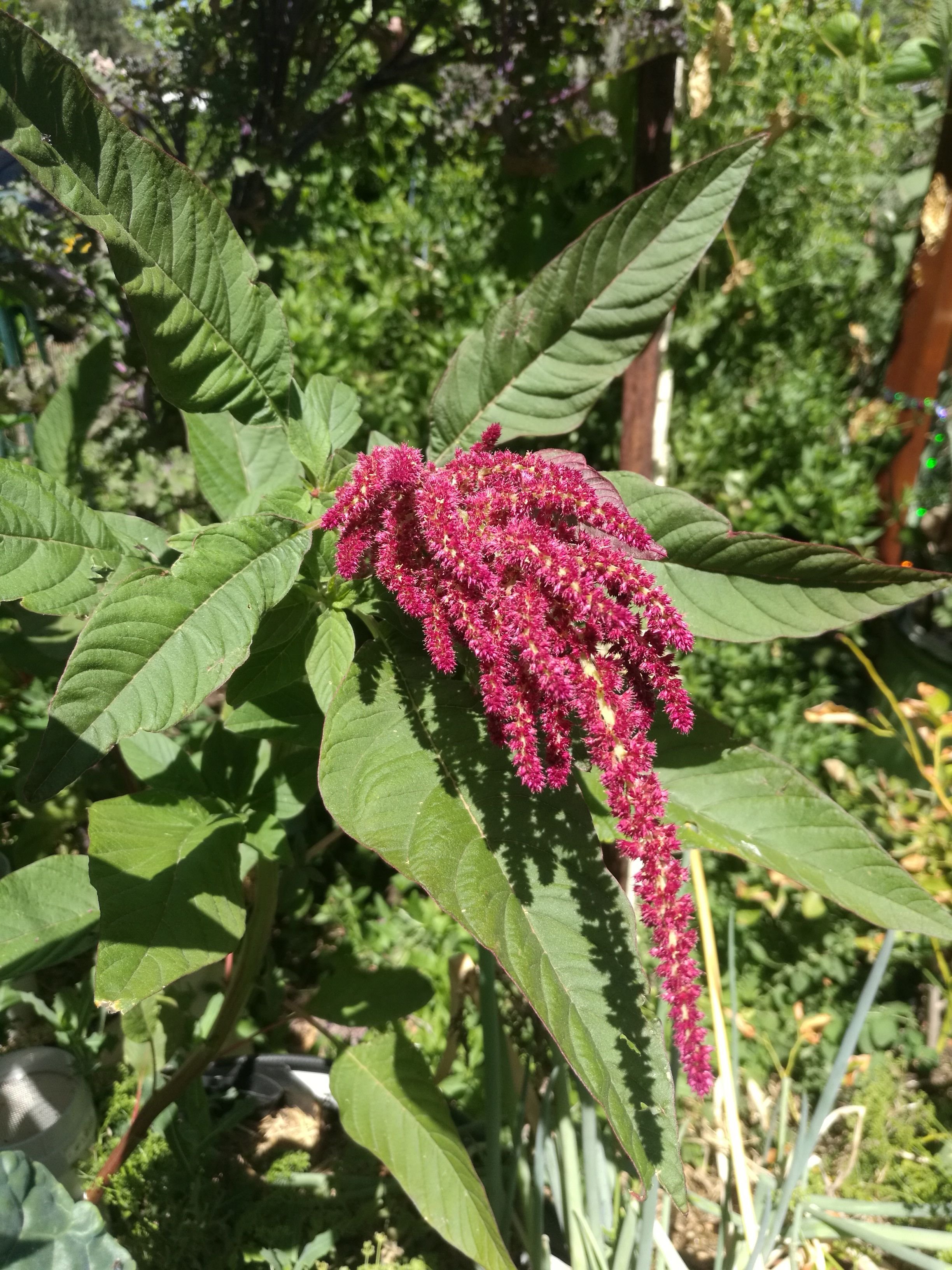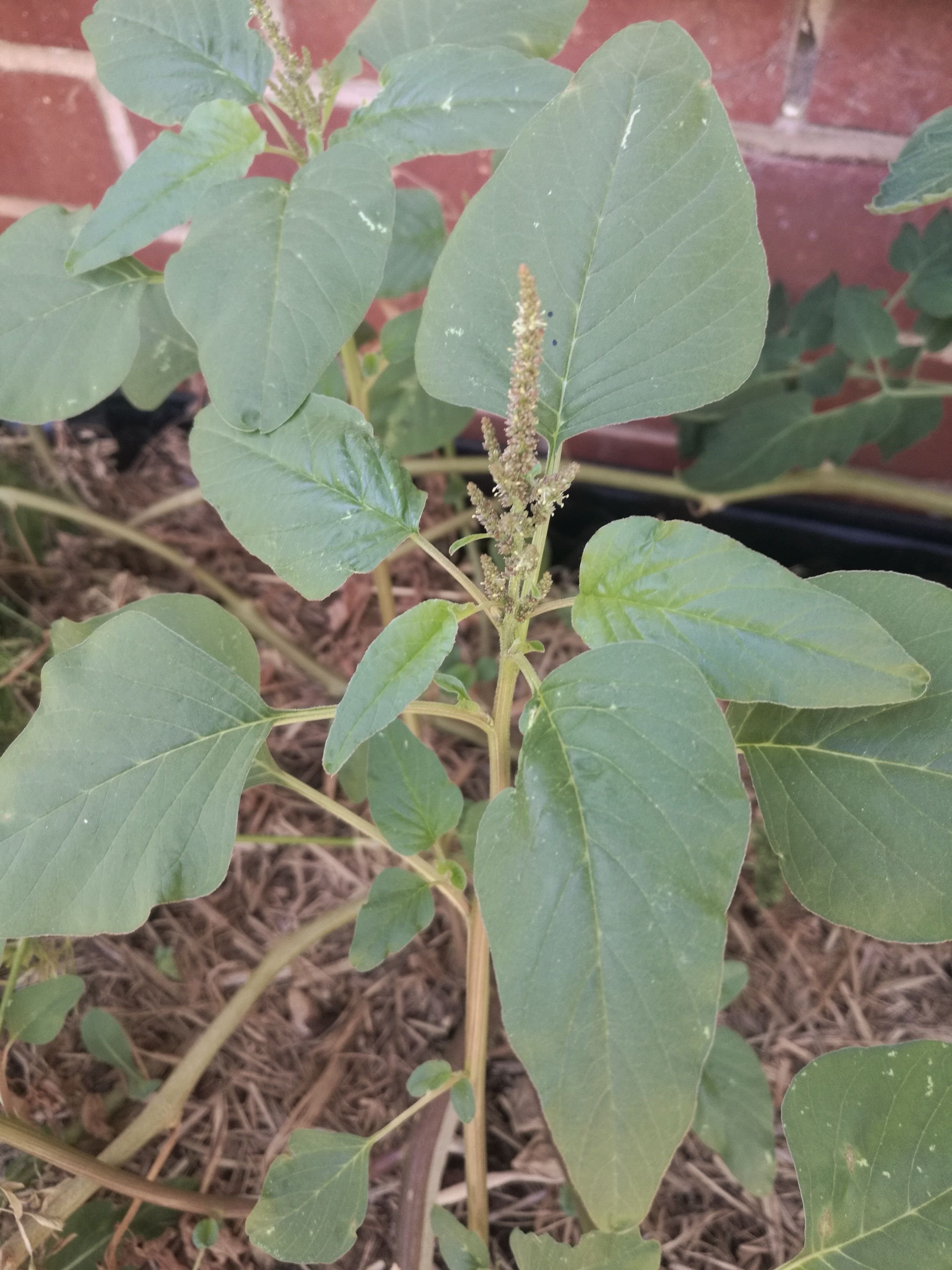
Amaranth is a big genus and many common food plants fall under its umbrella. Its actually a botanic Family of its own nowadays and common edibles such as Spinach, Beet, Quinoa, Samphies and Saltbushes are included in this happy bunch. In fact, anything that was under 'Chenopodiaceae' is now included.
Amaranths are used far and wide as food crops for their seeds (e.g. Quinoa) and leaves (e.g. Spinach and Chard). For this post, though, we'll only look at those garden and weed plants that are called 'Amaranth'.
It is the beautiful flower spikes that endear many people to Amaranths - the one that springs to mind first is Amaranthus caudatus, which goes by the evocative common name of 'Love Lies Bleeding'. Its red leaves and flowers brighten many a garden. This one is not too tasty though.
In our area, A. caudutus is a garden escapee and is beginning to form a pretty, red understory beneath the Castor Oil plants that grow along the nearby creek.

Green Amaranth (Amaranthus virdis) is a common weed around where we live, especially at this time of year. We eat the leaves and include the seeds on salads. It is so common that one or two plants always end up in our garden and somehow escape the tender mercies of the chickens, so we don't even consciously plant it - its just there.
Being a weedy species, it can get by with no attention at all, but rewards us with beautiful leaves when given the same watering as the rest of the garden.

In the pic above, you can see a 'Leaf Amaranth' that came from a pack in an Asian grocery store. I have no more details than that, but it grows a good two metres tall and provodes lots of large leaves that, when raw, remind me of celery in taste.
I'd forgottten that I'd planted this one until we moved our outside Christmas tree and it had been growing up inside in this 40°C heat! That's tough!
There you go, Amaranth, a distinctive edible weed that you can surprise your dinner guests with!

This is original content, the pics were taken in our garden today by yours truly.
Find out more about edible weeds on our blog, Ligaya.
We also have a YouTube channel and a Patreon page that you might like to visit.
We're also members of the Homesteadersonline community. Click the image for the invite link to join us


